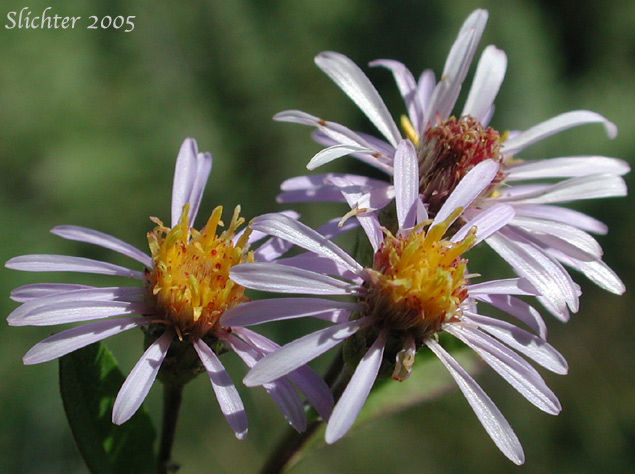
Rough-leaf aster is a perennial wildflower with erect stems from 15-60 cm high. The stems are hairy but not glandular. The lower leaves are obovate to oval in shape, the blade tapering to ciliate margined petioles. The leaves of mid-stem are narrowly oval, measuring from 4-12.5 cm long and 1-7 cm wide. The base of these leaves are sessile, and the tips are acute. The margins are toothed (except at the base) and the upper surface of the blades are smooth. The upper leaves are reduced to entire bracts.
The inflorescence is a flat or rounded cyme or cymose panicle. The heads are 1.5-2.5 cm wide and the stems below the heads are hairy. The involucre is 6-9 mm tall with the inner bracts narrow and ciliate margined and spreading tips which are greenish. The midrib of the bracts is keeled and the margins are purplish. There are 10-15 white to purple rays, each of which is 8-12 mm long. The disk corollas are 7-8 mm long.
Rough-leaf aster maybe found in dry, open woodlands.
Rough-leaved aster is found west of the Cascade summit from Washington south to central California. It is also found in the Ochoco Mts. of central Oregon.
In the Columbia River gorge, it may be found between the elevations of 100'-4300' from Angel's Rest east to near Mosier, Or. A good spot to see this early fall-blooming wildflower is to proceed along WA SR 14 to the large paved parking lot at the north side of Bonneville Dam and proceed on the connector trail to the Pacific Crest Trail. Numerous rough-leaf asters may be found in the dry meadow atop the eastern portal for the railroad tunnel along that trail.